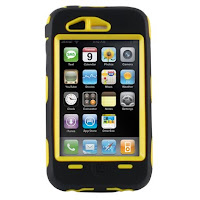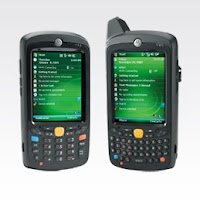These are challenging economic times. Companies of all sizes and shapes are seeking to reduce costs and to improve efficiencies. This often translates into more work with fewer resources which can often negatively impact service levels. How does a company reduce costs, improve service levels and become more efficient all at the same time? The improvement and automation of business processes is often the answer. Accomplishing this does not always require a lot of money. Sometimes it is simply focusing on improvement and understanding what your exisiting technology is capable of doing. This article will focus on cost reductions and efficiencies that can be recognized by improving business processes in remote and mobile locations.
Many large companies use ERPs from vendors such as SAP, Oracle, SAGE, MS Dynamics and others. These ERPs are designed to organize a business and to make business processes automated and standardized. However, companies have often over-looked the huge amounts of paper documents that are used in the field, collected and at a later date re-typed into these ERPs. Many ERP users have simply not attempted to automate business processes that happen outside the four walls. These business processes can have huge inefficiencies that can be fixed and savings recognized.
SAP has developed some very interesting mobile application interfaces that utilize Netweaver PI (Process Integration) and enable third party mobile software companies to tightly align their mobile device applications with the standard SAP business processes.
Field services are most often provided away from the office. The process of ensuring quality services outside of the visibility of supervisors and business managers is critical to the success of the business.
The use of industrial handhelds and rugged PDAs and other mobile software technologies, in the context of field services automation, is most often driven by the following 12 business motivations:
- Efficiencies in communicating information between the office and the remote service technician or jobsite
- Efficiencies in planning and scheduling work based upon location, parts and expertise needed
- Reducing fuel costs
- Reducing travel time
- Reducing time consuming and error prone data entry activities in the office
- Increasing productivity – more average service calls per service technician in a day
- Increasing service contract sales
- Increasing equipment upgrade sales
- Increasing collections with mobile invoicing, mobile printing of invoices and onsite collections
- Improving inventory control and management - visibility to parts needed, the location of inventory and parts used on each job or service ticket
- Reduced risks by reminding service technicians of safety hazards and safety procedures on the job
- Improving management visibility into work done in the field to ensure quality services
These 12 business motivations become increasingly important during slow economic times when times are tough, and every penny must be saved and maximized. In rapid growth periods inefficiencies are often overlooked in a rush to keep up with the market and business growth, and hidden under the onslaught of new sales and revenues. However, when the economy slows down, it is time for companies to re-evaluate business processes in order to eliminate the inefficiencies and bad habits that have developed. Let’s now review some common and costly inefficiencies:
- Wasted time and fuel driving back and forth to the office to pick-up and deliver new work orders, tools and parts. With the high cost of fuel, reducing driving distances is a necessity. Can you dispatch a service technician directly from their home to a nearby jobsite? Can you make sure your service technician has the most common parts in the van before they travel to the jobsite?
- Wasted time and fuel by being unprepared for the job and driving around looking for parts. Can you reduce travel time and fuel costs by being better prepared for the job before traveling? Can you ask customers for more information on the equipment such as brand, serial number, year, location, problem etc? Can you ask the customer for a digital photo of the equipment, serial number, etc., and email it before dispatching the service technician?
- Wasted time sitting outside of a locked and vacant location waiting for the owner to arrive. Can you set up an automated phone call to let the customer know you are on the way? This avoids showing up at a vacant house or closed business and wasting time.
- Inefficient dispatching and routing - dispatching service technicians to a distant location, when another service technician is closer and wasting time and fuel. Can you use GPS tracking on the vans to better know the location of all service technicians so you can dispatch the closest and best service technician for the job?
- Missed opportunities to sell more services, parts and equipment to the customer at the time of work. Can you automatically remind the service technician to promote service contracts by using a mobile handheld work order system? This will help increase service contract sales.
- Poor scheduling and routing -can you schedule service contract visits based on geographic location to reduce fuel costs and wasted travel time? Can a service technician complete more service calls in a day if they are routed more efficiently?
- Driving large, heavy vehicles when not required. If you have a better understanding of the parts required for today’s service calls, can you take a smaller, more fuel efficient vehicle to the jobsite?
- Poor cash management and collection processes. Can you collect money, swipe credit cards and print receipts from a mobile handheld device to improve collections at the jobsite? Are you wasting time, paper and postage sending out invoices weeks after the work was completed?
- Too high administrative costs. Can you reduce the costs of data entry and administrative staff by automating the dispatch process by using wireless work order dispatch that is integrated directly with your work order management and accounting systems?Every company, upon self-evaluation, will be able to identify additional inefficiencies that can be corrected and reduced. Many of the costly inefficiencies can be resolved by automating and mobilizing field services business processes.
Mobilized Work Orders
What does an automated and "mobilized" work order system or service request dispatch and management system look like? Let's walk through a scenario -
- A customer calls in to report a broken heating system. The office staff takes the phone call, enters the relevant information into the work order application on the desktop computer which then creates a unique work order and number.
- The work order database application, with GIS integration, can compare the location of each service technician to determine which service technician is closest to the work location. The dispatch system can also look at the estimated time the nearby service technicians are committed to completing their existing assignments.
- Once the appropriate service technician is identified, the work order is dispatched to the handheld computer used by the service technician.
- Included in the electronic work order is driving directions from his/her current location to the next job location.
- In addition to the work order information, warranty, repair, users manual, maintenance history and product information on file can also be dispatched to the handheld computer for reference and parts inventory management.
- Once the service technician arrives at the location, he opens the work order on the handheld computer. Opening the work order automatically captures the service technician's name, the date/time stamp and the GPS coordinates of the jobsite and enters them into the mobile application’s work order.
- Next the service technician examines the broken heating system and determines which parts need replaced.
- He can pull out his handheld computer and check whether he has the needed parts in his vehicle inventory, if not, it can automatically search for nearby service vehicles that may contain the part (GPS tracking enables this). If another nearby service vehicle is determined to have the required part, then driving directions can be sent.
- When the service technician arrives at the service vehicle with the needed part, then the part is scanned using a bar code scanner in the handheld computer to log its removal from the vehicle's inventory and assigns it to the appropriate work order number.
- Back at the work site, the service technician runs into a challenge. He has never worked on this model before and needs advice. He snaps a digital photo of the equipment and synchronizes it back to the office. His supervisor reviews the photo and calls him with advice which saves possibly hours of time and mistakes.
- Once the work is completed, the service technician signs his name on the handheld computer screen, and has the customer sign the work order screen as well. The service technician prints an invoice on a mobile printer and collects the payment or swipes the customer’s credit or debit card. The collection is noted on the mobile work order and synchronized back to the office.
- A customer survey can pop-up asking the service technician to let the customer answer a series of questions that will impact the service technicians monthly bonus plan
- As soon as the work order is completed and synchronized, the mobile application reminds the service technician to promote a 2 year service contract. The service technician reviews the details with the customer and signs them up for a 2 year service contract. Next, the work order system reviews job locations and priorities and assigns the next optimized work order to the field service technician.
These business processes are all criticial to the success of a field services business. These processes are sometimes complicated, and with the service technician remote and without direct supervisor management can often be done wrong or incomplete if paper based. The ability to standardize and automate these processes allow service based businesses to accomplish more business with less resources and with better quality.
SAP users are often large companies. Their field service operations can involve hundreds and even thousands of mobile workers. The possible savings from improving mobile operations can be enormous. If you would like to brainstorm about some or all of these mobile business applications for field services companies send an email.
***********************************************
http://mobileenterprisestrategies.blogspot.com/***********************************************





